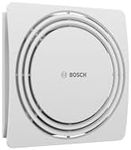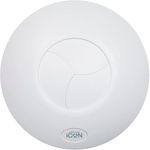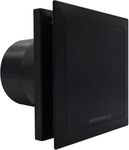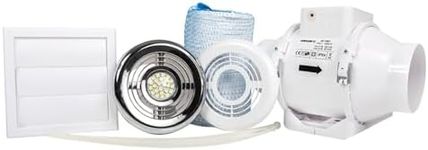Best Bathroom Fans
From leading brands and best sellers available on the web.
Manrose
Manrose, MF100T, black

Airflow
Airflow QT100HT Extractor Fan with Adjustable Humidity & Timer - 100mm/4 Duct - German Made, QuietMark Certified 25 dB, Energy Efficient 5/9W, 2-Speed Operation Upto 25 l/s (90 m³/h), 3-Year Warranty

Airflow
Airflow iCON 60 Kitchen Extractor Fan 150mm | 78 l/s, 66.3W, Iris Backdraught Shutter, Optional Humidity, PIR & Timer Modules Sold Separately | 3 Yr Warranty | Installation by Qualified Electrician

Bosch Thermotechnik
Bosch Silent Bathroom Extractor Fan 1900 DH W100 - For Ventilation in Bathroom and Toilet, Against Moisture and Mould - With Humidistat and Timer - 100mm Diameter

Envirovent
5%OFF
Envirovent SIL100 Silent-100 Axial Silent Extractor Fan Axial 100 mm / 4 Inch Timer Model (White)

Airflow
Airflow iCON 15 Bathroom Extractor Fan 19 l/s - 100mm/4 - Iris Open/Close Backdraught Shutter Tech - Energy Saving 9.4W - Optional Humidity, PIR & Timer Modules Sold Separately | 3-Years Warranty

Airflow
Airflow QT100 B Black Bathroom Extractor Fan – Ultra Quiet 25 dB(A), Energy Efficient 5W, IP45 Rated, Two-Speed 21/25 L/s, Wall/Ceiling Mount, German Engineered, QuietMark Certified, 3-Year Warranty

Manrose
Manrose QF100T Quiet Extractor Fan with Timer for 4"/100mm Duct

Airflow
Airflow Aventa 100mm Timer In-Line Extractor Fan Kit with LED Lamp – Includes 6m Flex Duct, Ties, Chrome & White Grilles, External Grille – 2 Speed, Adjustable Timer - 3 Years Warranty






